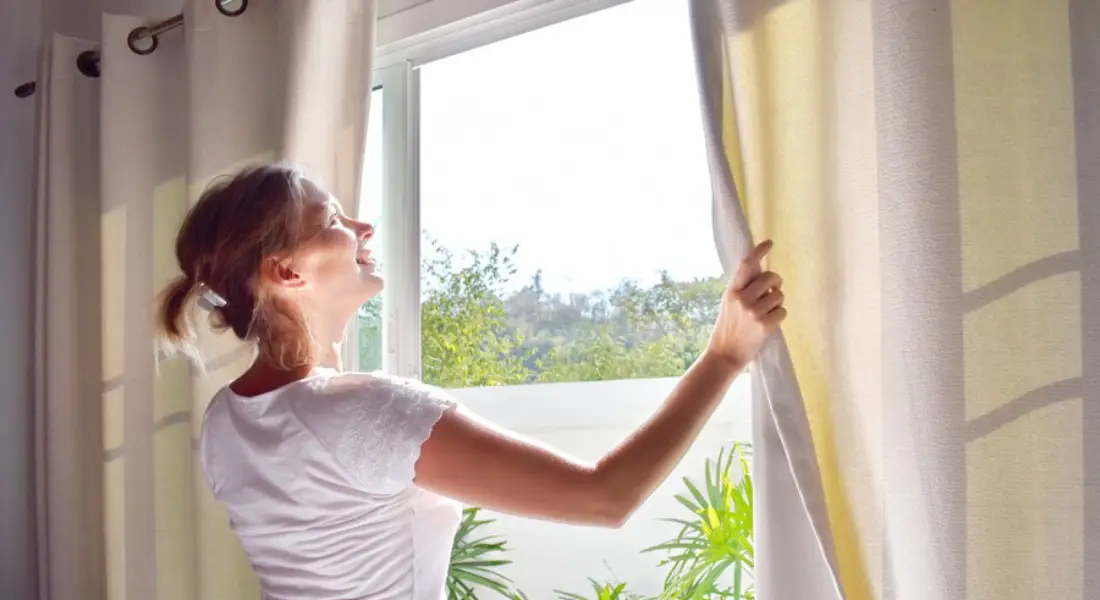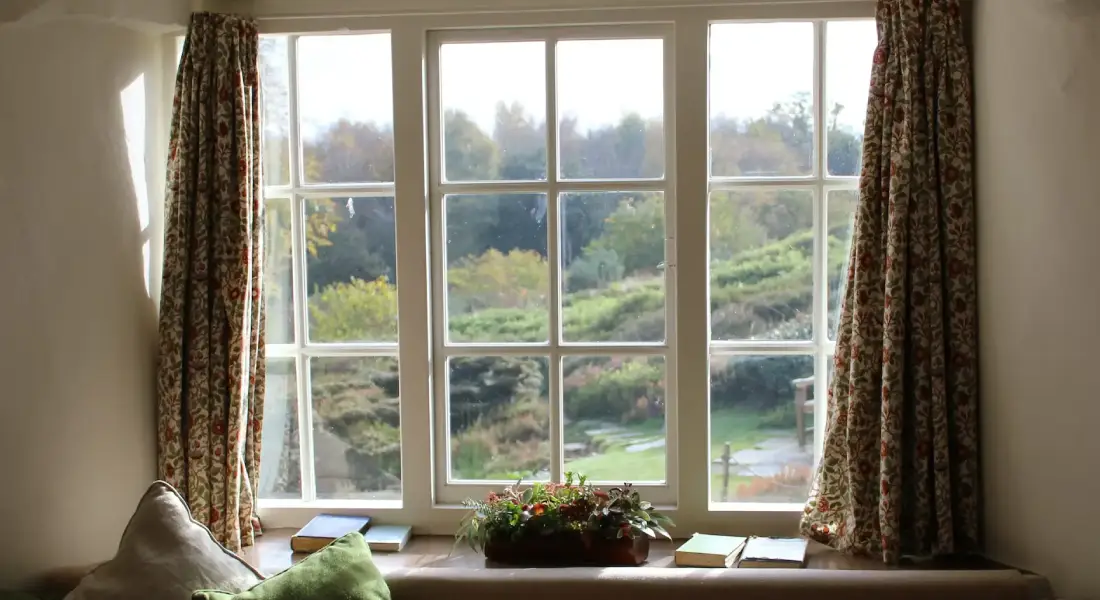
Comprehensive Window Treatment Guide: Choosing the Best Options for Your Space
On July 23, 2023, it was measured at 49.0 °C (120 °F) in Dubai. Given Dubai's hot climate, you must desire curtains that offer comfort by cutting glare and keeping the interior at a comfortable temperature.
Dubai experiences extreme temperatures, and curtains can help insulate your home, keeping it cooler in the summer and warmer in the winter.
- Privacy: Window treatments can help to protect your privacy from passersby and neighbors, especially in rooms with windows that are street-facing or close to other homes.
- Light control: Window treatments can help control the amount of light that enters a room, which can be important for both comfort and energy efficiency. For example, blackout curtains can be used to block out light in a bedroom for better sleep, while sheer curtains can be used to let in natural light while still providing some privacy.
- Energy efficiency: Well-chosen window treatments can help to insulate your home and reduce your energy bills. For example, heavy curtains can help to keep heat in during the winter and cool air in during the summer.
- Noise reduction: Window treatments can also help to reduce noise from outside, which can be beneficial for creating a more peaceful and relaxing home environment.
- Decor: Window treatments can also play an important role in the overall decor of a room. They can add color, pattern, and texture to a space, and they can be used to tie together different elements of a room's design.
- Acoustic Benefits: Thick, layered window treatments can absorb sound, reducing noise pollution from outside and improving the room's acoustics, making it a more peaceful and serene space.
Browse Window Treatments by Type

Curtains
Curtains are the most classic type of window treatment, and for good reason. They are versatile and elegant and can be used to achieve a variety of looks. Curtains are made from a wide range of fabrics, including cotton, linen, silk, and velvet. They can be hung from a rod or track, and they can be either drawn closed or left open to let in light. Curtains are a good choice for any room in the house, but they are especially popular in living rooms, bedrooms, and dining rooms. They can be used to add a touch of luxury and sophistication to a space, or they can simply be used to provide privacy and light control.
Tier Curtains
Short-tier curtains are commonly hung in pairs and are suitable for smaller windows or when used in conjunction with other treatments like curtains or blinds. These curtains come in various fabrics and styles, adding a unique charm and personality to any room. Tier curtains are an ideal choice for smaller spaces like bathrooms and kitchens, as well as rooms with high windows such as stairwells or living rooms with cathedral ceilings.
Valances
Window valances are a type of treatment that is installed at the top of a window. They serve the purpose of hiding the hardware of curtains or blinds and also enhance the aesthetic appeal of the window. Valances are created from various fabrics like cotton, linen, and silk. They can either be plain or patterned and decorated with lace, tassels, or other ornaments.
Valances are a versatile choice for any room in the house, particularly in living rooms, dining rooms, and bedrooms. They can add a touch of sophistication and formality to a space or simply add a pop of color or pattern to the decor.
Window Shades
Did you know that window shades are a type of window treatment made from a single piece of fabric or synthetic material? They can be raised and lowered using a cord or remote control and come in many different styles, such as roller shades, Roman shades, and cellular shades. Plus, they offer a range of opacities, from sheer to blackout. Window shades are a great option for any room in your home, but especially in bedrooms and bathrooms where light control and privacy are key. Additionally, they can help insulate a room and reduce energy costs.
Choosing By Light Preferences

Sheers
Sheers are window treatments made from various fabrics, including cotton, linen, and voile. They are light in weight and semi-transparent and can be drawn closed or left open to allow natural light in. Sheers are perfect for rooms where privacy is needed without sacrificing the flow of light. They are also great for creating a soft and airy ambiance in any room.
Benefits of sheers
- Privacy: Sheers provide some privacy while still letting in natural light.
- Light control: Sheers can be used to control the amount of light that enters a room.
- Versatility: Sheers can be used in any room in the house, and they can be paired with other window treatments, such as curtains or blinds.
- Style: Sheers come in a variety of colors, patterns, and textures, so you can choose a style that complements the décor of your room.
Finding Your Style: Looks by Length

Curtain length can affect the mood of a room in a variety of ways. If you need to block out light in a bedroom, you may want to choose long curtains. If you want to let in a lot of natural light in a living room, you may want to choose shorter curtains.
- Bedroom: For a casual and relaxing bedroom, you could choose short curtains in a light color or soft pattern. You might opt for long curtains in a deep color or striking pattern for a bedroom that is more formal and elegant.
- Living room: For a casual and relaxed living room, you could choose medium-length curtains in a neutral color or soft pattern.
- Dining room: For a dining room, you could choose medium-length or long curtains in a formal fabric, such as velvet or silk. The color and pattern of the curtains should complement the décor of the room.
- Kitchen: For a kitchen, you could choose short curtains in a colorful or patterned fabric. You could also choose tier curtains or cafe curtains.
- Bathroom: For a bathroom, you could choose short curtains in a water-resistant fabric. You could also choose shower curtains.
Exploring by Top Treatments
Back Tab
You can hang curtains with back tabs on a curtain rod by using loops at the back of the curtain header. This hanging style creates a pleated effect that looks elegant and sophisticated. Back tab curtains are perfect for formal living rooms, dining rooms, and bedrooms.
Grommet Top
Grommet top curtains are hung from a curtain rod using metal grommets at the top of the header, making it a modern and functional style. They are easy to open and close, making them convenient for any room in the house. Although they are suitable for any room, they are particularly popular in kitchens and bathrooms.
Rod Pocket
Curtains with a rod pocket are hung from a curtain rod by threading the rod through a pocket at the top of the curtain header. This style of hanging creates a soft and seamless look. Rod pocket curtains are a good choice for casual living rooms, bedrooms, and nurseries.
Tab Top
Tab top curtains are hung from a curtain rod by using fabric tabs at the top of the curtain header. This style of hanging is very versatile, as the tabs can be adjusted to create different effects. Tab-top curtains are a great choice for any room in the house, but they are particularly popular in kitchens and bathrooms.
Measuring and Installing Your Window Treatments

Step-by-step guide on how to get accurate measurements
- 1. Window width: Measure the width of your window opening from one side to the other, including the trim. Add at least 6 inches to this measurement to allow for fullness in the curtains.
- 2. Window length: Decide where you want your curtains to end. If you want them to graze the floor, measure from the top of the window frame to the floor. If you want them to puddle on the floor, add an extra 8-12 inches to this measurement.
- 3. Return: If you are using curtain rods with returns (the ends of the rod that project beyond the window frame), measure the distance from the edge of the window frame to where you want the return to end. Add this measurement to the width measurement from step 1.
- 4. Header height: The header is the top of the curtain that gathers around the curtain rod. Measure the height of the header from the top of the rod to the bottom of the header.
Potential pitfalls to avoid
- Not measuring the width of the window opening from one side to the other, including the trim.
- Not adding enough fullness to the curtains.
- Not measuring the length of the curtains from the top of the window frame to the desired length.
- Not measuring the return distance if using curtain rods with returns.
- Not measuring the header height.
- Not using a metal measuring tape for the most accurate measurements.
Conclusion
It's important to consider window treatments when decorating your home. They not only provide privacy but also control the amount of light that enters the room. Whether you're looking for a functional or aesthetic solution, window treatments are a must-have.
We suggest exploring different types of window treatments and mixing them to achieve a unique and personalized look. This way, you can create a space that reflects your style and personality. Don't hesitate to try something new and experiment with different textures, patterns, and colors. The possibilities are endless, and the final result will make it all worthwhile. Have fun decorating!